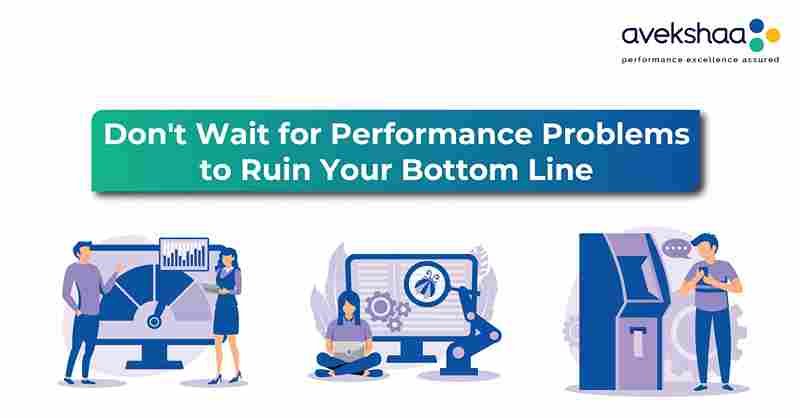Do you know 53% of users uninstall an app if it crashes, freezes, or has errors? 46% of users abandon the app if it takes more than three seconds to load.
As more customers depend on applications for everyday tasks, they expect the apps to function smoothly. Delays in loading or response time, frequent crashes, or poor speed frustrates them. It leads to a bad customer experience and earns the company a bad reputation.
Although CIOs understand this and dedicate resources, time, and effort to app and performance testing, many performance issues persist. Why is that? This question leads us to explore the shift-left approach in performance engineering, highlighting its significance in identifying and resolving issues early in the development cycle
The problem is that the Quality Assurance (QA) teams take a reactive approach toward testing. Some companies still follow the old process of testing the application after its development. So, even if there’s a critical issue in the design or architecture and the QA team finds it, there’s not much the developers can do about it because fixing it would take too much time, cost too much, and be just too hard. Burdened by “go-to-market” pressures, they launch it with just basic fixes, which inevitably impacts the quality of service (QoS).
Naturally, CIOs are concerned that the app’s poor performance could impact the customer experience and the bottom line.
Hence, many companies are shifting from reactive performance testing to proactive performance engineering.
What Is Proactive Application Performance Engineering?
Let’s just say that proactive application performance engineering follows the proverbial stitch in time saves nine approach.
Integrate Performance Engineering early into the entire software development cycle (SDLC) where focus is to carry out an independent QoS review of Architecture, Design, Code and configuration at the source rather than discover it later in the cycle, thus comply to Cost saving (cost increases between 10X-100X due to late discovery of issues) and adherence to time to market (identifying issues later in the program would compromise Time to go-live).
Why Should CIOs Consider Proactive Performance Engineering?
1. Aligns with DevOps Principles
The old ways of performance testing may have worked well with the traditional software development processes. But with companies increasingly using DevOps and agile methodologies, the approach needs to change. Performance engineering aligns perfectly with DevOps principles. DevOps work on Continuous Integration and Continuous Deployment (CI/CD) principles. So, the application is always in a releasable state throughout the lifecycle. To ensure that the application is fully tested and to decrease performance issues and failure rates, the QA teams do the testing continuously. Performance engineering ensures the application is validated at every stage of the lifecycle and set for launch. It includes both shift-left (testing very early in the code development phase) and shift-right (testing infrastructure and conditions extensively in the post-production environment) approaches, which make continuous testing impactful.
2. Rectifies Mistakes Before the Customer Finds Them
Any issue can disrupt the customer’s experience or even lead to grave consequences like security and data breaches. But many issues often go unnoticed when testing happens at a late stage of SDLC, or sometimes it’s too late to fix them.
As performance engineering involves application testing at all stages, there’s an increased chance of identifying the bug at the source and fixing it before moving to the next stage of the lifecycle. This enables the developers to build a bug-fee application right from the start than waiting till the end to fix them.
3. Reduces the Cost of Fixing Defects
A bug found after the release could cost 30x more than the ones fixed early on. There were instances where companies had to pay heavy fines or undergo monetary losses due to poor app performance or unexpected outages and disruptions. That’s why the earlier the QA team detects issues with the application, especially those that can hinder performance, the easier it is for developers to fix them. They can prevent bugs and performance issues from entering the production phase and control the cost of fixing defects.
Performance engineering ensures that the defects are identified and mediated at the source throughout the lifecycle. This enables the companies to reduce losses, prevent cost escalations, and bring consistency to customer experience.
4. Boosts Customer Satisfaction
Proactive application performance engineering ensures that the app functions at an optimised level under every situation. This means fewer or almost no outages, crashes, disruptions, or security breaches while using the app. A seamless experience will go a long way in boosting customer satisfaction and reducing customer churn. In fact, the frictionless experience could play a critical role in improving conversions and generating revenue for the company.
Prevent Application Performance Issues with Performance Engineering
Although both are seemingly similar, there’s a huge difference. The QA team focuses on designing and executing test cases in performance testing. In performance engineering, they are actively involved throughout the SDLC in building high-performing applications. The objective of performance testing is to identify bugs and fix them. Performance engineering takes it to the next level as the QA team helps the developers build a flawless app that meets customer requirements. Unlike performance testing, performance engineering is not just about using tools. It is about creating a culture that focuses on building high-performance apps. It ensures that the application is ready for deployment at all times.
Performance engineering is still at a nascent stage. A trustworthy partner can help in making it an integral part of the SDLC process. For organizations looking to enhance their QA strategies and meet heightened customer expectations, how QA strategies can help you meet heightened customer expectations today provides further insights into integrating performance engineering principles effectively.
At Avekshaa Technologies, we ensure application Performance, Availability and Scalability with our robust platform approach that helps companies prevent revenue loss and customer dissatisfaction. The P-A-S-S™ solution and platform prevents downtime through early prevention and detection of technology failures, optimises the application’s performance, and ensures continuous improvement.
To prevent application performance issues with application performance engineering, contact us.


